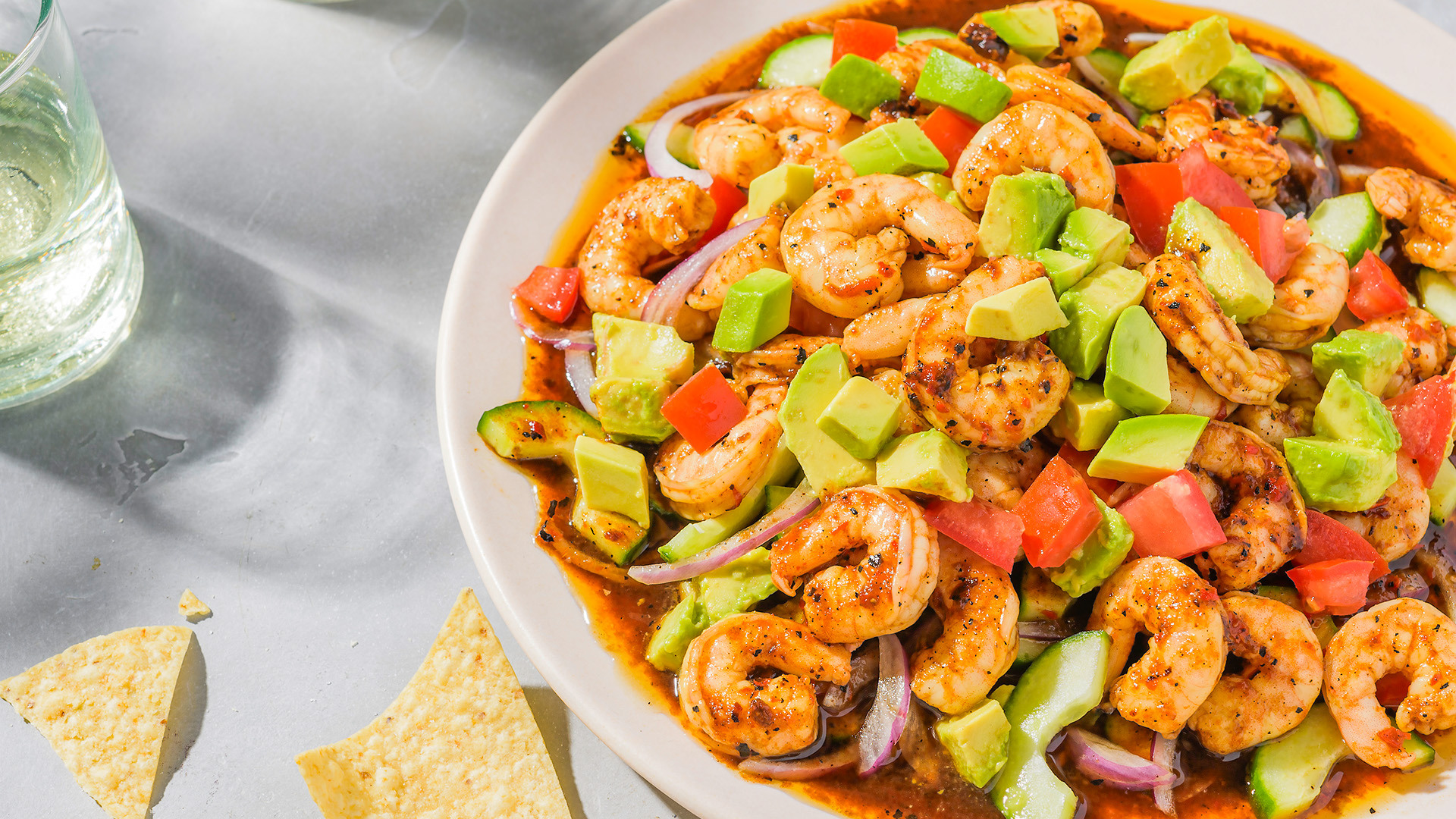
The dish traditionally is made with a fragrant, deep-red paste of tomato, achiote and cola de rata chilies, which can be hard to source in the States. To replicate the flavor of the seasoning paste, we rely on a combination of mild, fruity guajillo and smoky, raisin-y ancho, as well as soy sauce—an ingredient commonly used in the region’s cuisine.
We didn’t arrive at that combination haphazardly. As Director of Education Rosie Gill explains in the episode, substituting chilies is easy once you understand the relationship between flavor and heat.
Think in adjectives, not nouns
Think of your dried chilies as adjectives, not nouns, and group them by similar flavor characteristics. This will help you make swaps and substitutions when needed, and let you be more creative in your own cooking.
Dried chilies usually fall into three broad groups: the smoky, the sun-dried and the berry-like. First up, the smoky: We use a lot of chipotle chilies (smoked red jalapeños) here at Milk Street, and also love ancho chilies (dried poblanos) not only for their smoky flavor, but for their earthy, warm and chocolatey notes. Urfa chile also brings those lovely notes of chocolate, with hints of tobacco and a slight bitterness. We enjoy Moritas as well—they’re another type of chipotle chile that typically is smoked for less time than other chilies in the category—and pasillas, a dried green Chilaca chile with an earthy, slightly sweet flavor.
The second grouping is what Rosie calls the “sun-dried tomato” category, because they bring the same concentrated intensity you’d find in a sun-dried tomato. Chile de arbol is small but mighty, with a big punch of spice; pequin peppers are nutty, citrusy and fiery; and paprika has a lovely mild heat that complements its sun-dried flavor.
The third category are those chillies that have a dried red raspberry quality—tart and fruity. Our recipes often call for the bright and moderately hot guajillo (dried mirasol chile), but we’re also fans of the cherry-sweet New Mexico chile and the rich, rounded cascabel.
Sort fresh chilies by color
Color has a flavor; use it to your advantage when making substitutions. If you can’t take the heat from diced green jalapeño, you can replace some (or all) of it with an equal amount of fresh green bell pepper. You’ll get the verdant, vegetal flavor of the chile, without the fieriness. It also works the other way around. If your recipe calls for red bell pepper, but you crave the spice, you can replace some (or all) of it with an equal amount of Fresno chile. The flavor profile will remain the same and you’ll get to enjoy the heat you crave.
One thing to keep in mind when making these swaps is the function of chile heat in a recipe. In addition to releasing fun endorphins, spicy food brightens other flavors, much like acid. If you decide to decrease the heat, make sure to compensate with a squeeze of lime or lemon juice, a sprinkling of sumac, a splash of vinegar or another tart ingredient to add some brightness.
Join the conversation on Facebook, Instagram, TikTok and Pinterest.
And if you’re looking for more Milk Street, check out our livestream cooking classes with our favorite chefs, home cooks and friends for global recipes, cooking methods and more.


